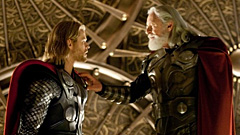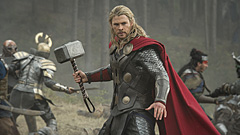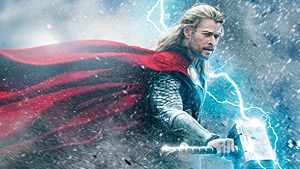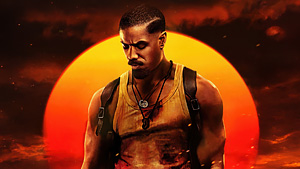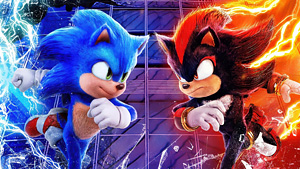May 8, 2011 by Paul Curtin

With a budget of $150 million, a built-in fanbase, and an Oscar-winning cast, Thor is set to take over. But is Thor worthy of ruling the summer box office, or just a flash in the pan that will quickly fade out while other big budget films shine this summer?
When first hearing about Thor being in production and set to be merged with Marvel films like Iron Man, I was a bit skeptical if the story could be pulled off without ruining the previously established Marvel universe created by other films in the franchise. Prior Marvel films have always kept a somewhat realistic feel due to superhero powers coming from man-made technology, whereas Thor introduces a whole ‘nother dynamic of superpowers, magic, and gods from other planets.

However, my worries of a train wreck of a movie with too much going on were quickly put at ease right from the start as Thor seamlessly transitioned between the three different settings of Earth, Asgard (Thor’s homeworld), and Jotunheim (the evil Frost Giants’ homeworld). The visuals (most notably in Asgard) are amazing, despite being heavy on the CGI. Most of the film takes place on Earth and Asgard, with Thor being cast out of his homeworld of Asgard early on in the film, whereas afterwards he’s forced to live on Earth as a mortal man and learn how to interact and fit in our society.
The chemistry between Thor (Chris Hemsworth) and Jane Foster (Natalie Portman) as Thor roams around Earth acting like he’s from medieval times is amusing and plays as comic relief between the more serious scenes that are taking place simultaneously in Asgard. The casting of Hemsworth, Portman, and Anthony Hopkins (who plays Thor’s father, Odin) is all spot on; all three nail their roles and will hopefully be used more in future movies in the Avengers franchise.

There are also many characters from previous and upcoming Marvel films featured throughout the movie and in an extra bonus scene after the credits (spoilers here). The multiple small cameos, which is becoming a staple of Marvel movies, help keep viewers’ interest in every little detail throughout the film to make sure they don’t miss anything that might hint at future plotlines for films in the franchise. The cameos also help advertise and build the names of lesser known characters who might have their own spin-offs or big roles in upcoming Marvel films. Even good old Stan Lee (the original creator of the Thor comic) makes his usual quick Marvel movie cameo, which is always good for a cheap laugh.
The only real negative with Thor is the 3D, which was tacked on to raise ticket prices and bring in more money at the box office. Unfortunately, 3D adds nothing to the viewing experience and if anything, makes Thor worse to watch. I found myself actually taking off my 3D glasses during darker scenes just because of how much brighter the screen was without the glasses.
It’s hard to really be immersed in a movie with the screen being so poorly lit while wearing the special bulky 3D glasses. Certain big fight scenes like the one in Jotunheim, which takes place at night, are very hard to make out due to the lack of detail from the dim picture. I’d highly suggest going to see the movie in IMAX 3D instead of normal 3D; if anything, save the extra money spent on 3D tickets and just see the film in bright and clear 2D — I wish I had. The best 3D effects Thor had to offer were during the credits as the camera flew through space, and that alone isn’t worth the extra four dollars you’ll pay for a 3D ticket.

The Verdict
Despite the worthless 3D, Thor is still a strong contender at this summer’s box office. While Thor most likely won’t take the crown and be this summer’s biggest hit, or our best rated film of the summer, it lives up to the hype and is worth the price of admission (as long as you check it out in IMAX 3D or 2D). Thor gets 3.5 out of 5 stars. (Good)



